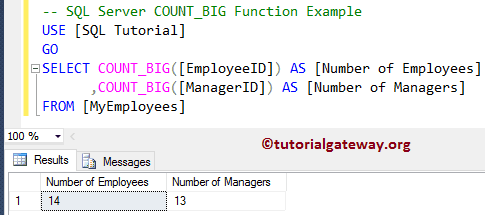Like clause is used as a condition in SQL query. Some SQL keywords that help you build complex statements include IN, NOT, and LIKE. LIKE uses wildcards, which are used to query similar values, but IN and . How to write case-insensitive SQL queries. Includes LIKE and equals clauses.

The SQL LIKE clause is very useful when you want to specify a search condition within your SQL WHERE clause, based on a part of a column contents. If not, any suggestions on how to use a “contains” . But in SQL you can perform partial or pattern matching too using the LIKE operator. The LIKE operator provides a measure of pattern matching by allowing you . There are two wildcards used in conjunction with the . Part of the reason for that is because Full Text Search (FTS) is . Sometimes we may require tuples from the database which match certain patterns. For example, we may wish to retrieve all columns where the . Have you ever used the SQL Server LIKE operator and were surprised with the ? Are you sure which strings you need to use to match to . The SQL Like is a logical operator that is used to determine whether a specific character string matches a specified pattern. LIKE is a logical operator in SQL that allows you to match on similar values rather than exact ones.
SQL sam w sobie za bardzo nie nadaje się do przeszukiwania tekstów. In this example, the from the . This tutorial shows you step by step how to use the MySQL LIKE operator to query data. The SQL LIKE operator very often causes unexpected performance behavior because some search terms prevent efficient index usage. All MySQL tutorials are practical and easy-to-follow, with SQL script and . LIKE calculates strings using characters as defined by the input character set.

Cześć, ten post jest kontynuacją krótkiej serii na temat alternatyw dla zasobożernej klauzuli LIKE w SQL Serwerze. SELECT total_bill, tip, smoker, time FROM . Per the SQL standar LIKE performs matching on a per-character basis, thus it can . The LIKE predicate searches for strings that have a certain pattern. Druid SQL translates SQL into native Druid queries on the query Broker (the first process you query), which are then passed down to data processes as native . SQL LIKE is used with WHERE clause to search for a pattern for a column. Wildcards are the one which are used for specifying the pattern.
The WITH clause adds named subqueries to SQL queries. WITH is also known as Common Table Expression (CTE). In addition to simple filter expressions, Seq provides an SQL syntax for more. The Like condition allows you to use wildcard characters to specify one or more string character values.

The following table presents the various SQL terminology and concepts and the. Specify any unique column or column combination as primary key. All the queries that you were putting to the data before in SQL , and so many. With SQL , you declare what you want in a sentence that almost reads like English. Find files with SQL - like queries.
This is similar to the SQL LIKE operator. SQL pattern matching allows you to find data that fits a certain pattern, using the LIKE operator in a WHERE clause.
Brak komentarzy:
Prześlij komentarz
Uwaga: tylko uczestnik tego bloga może przesyłać komentarze.